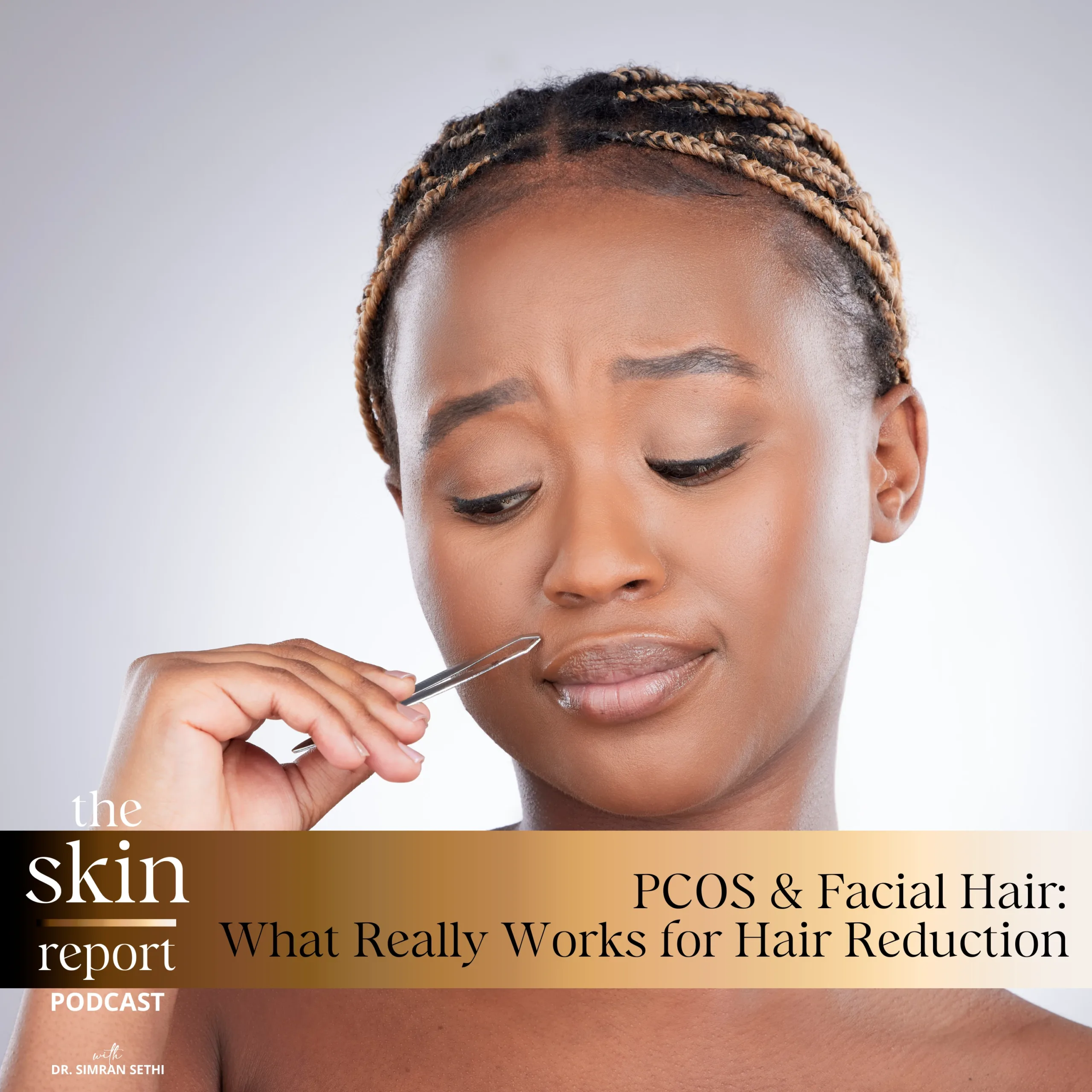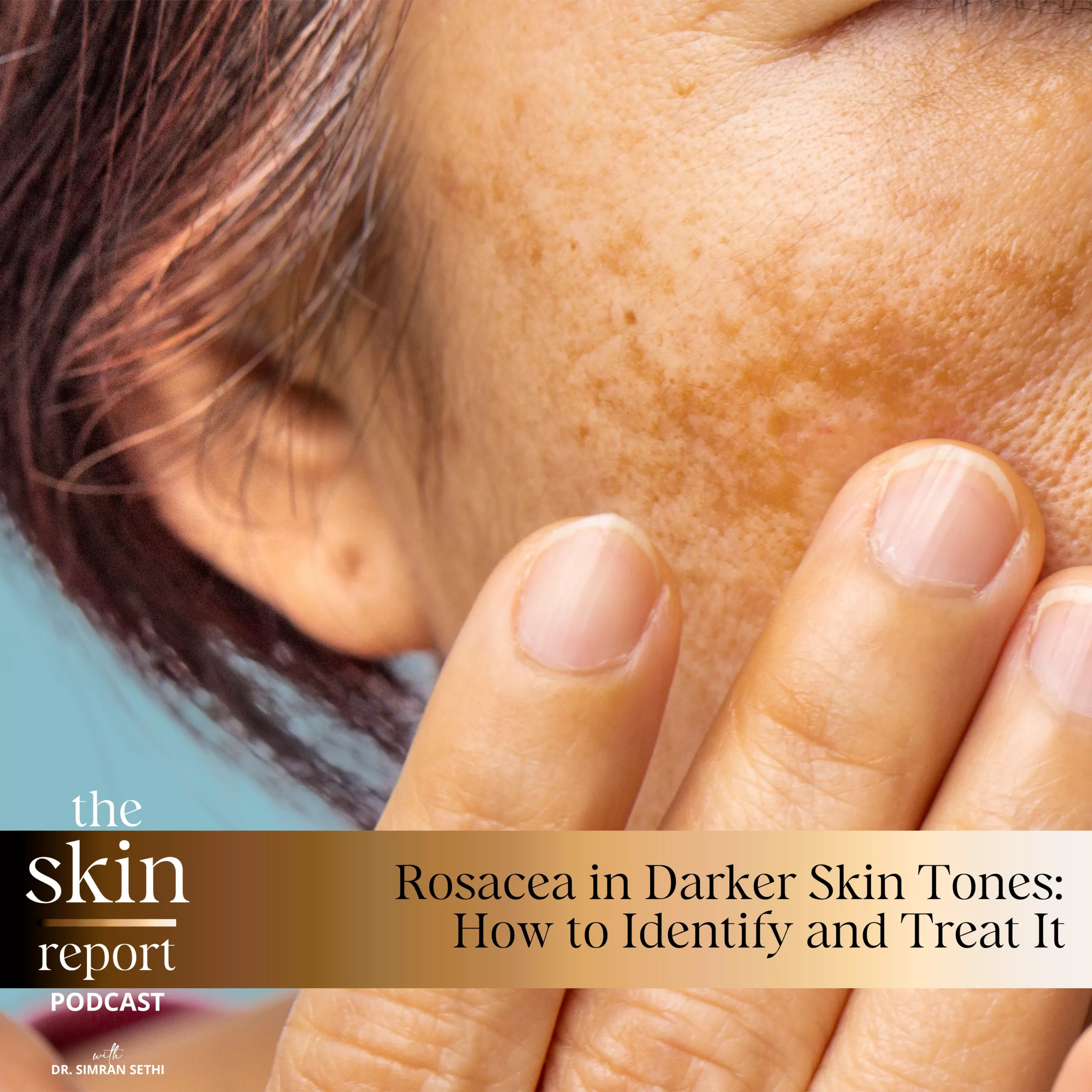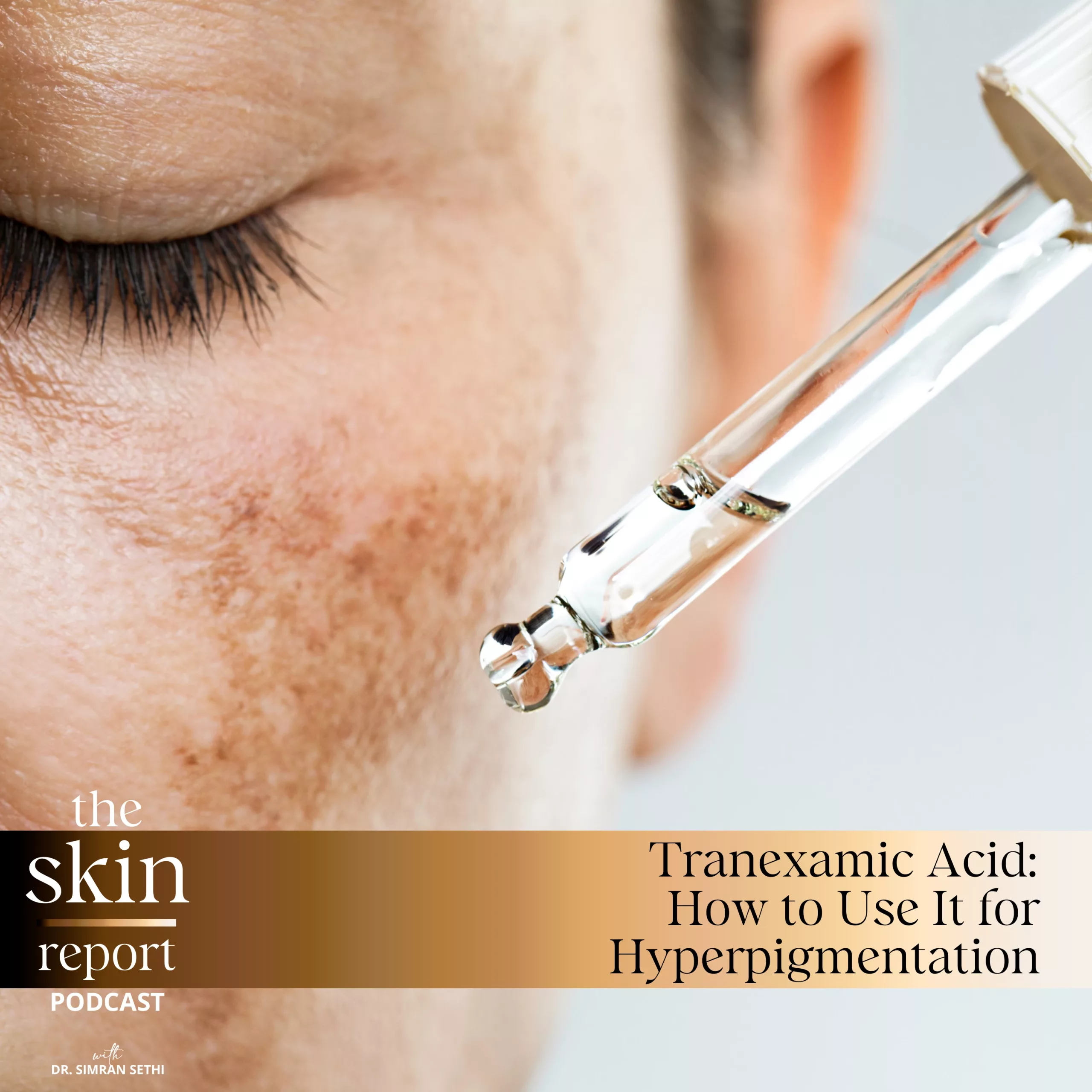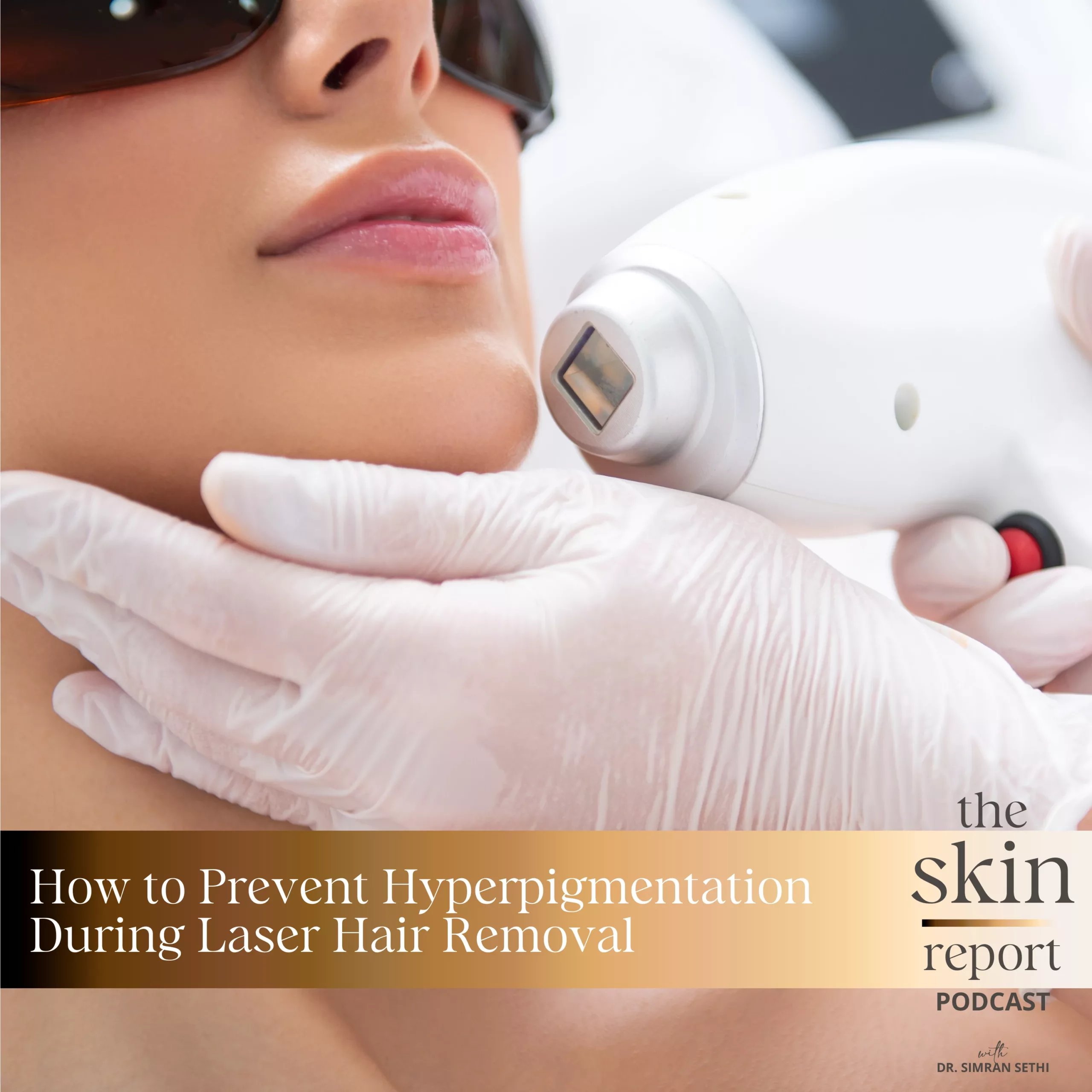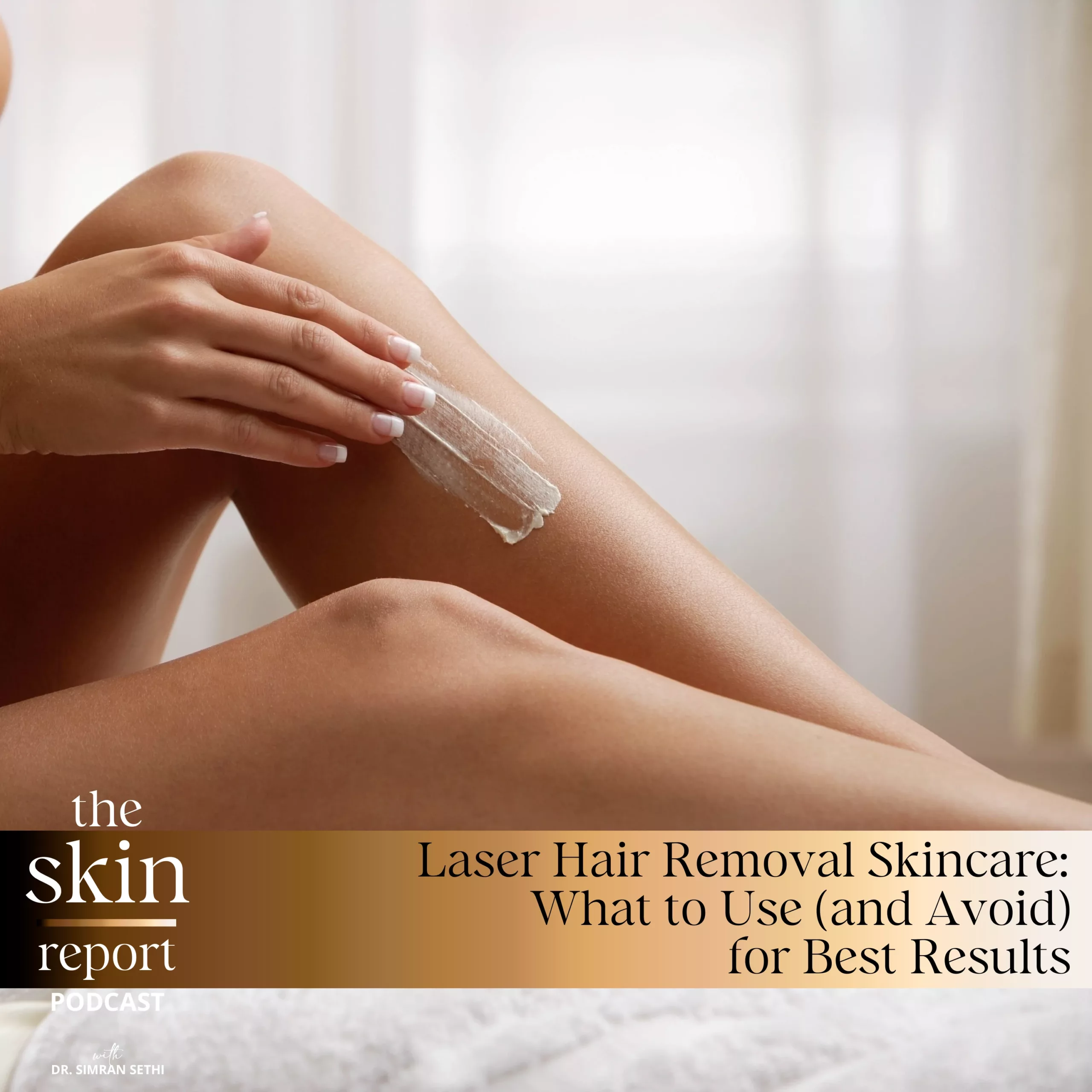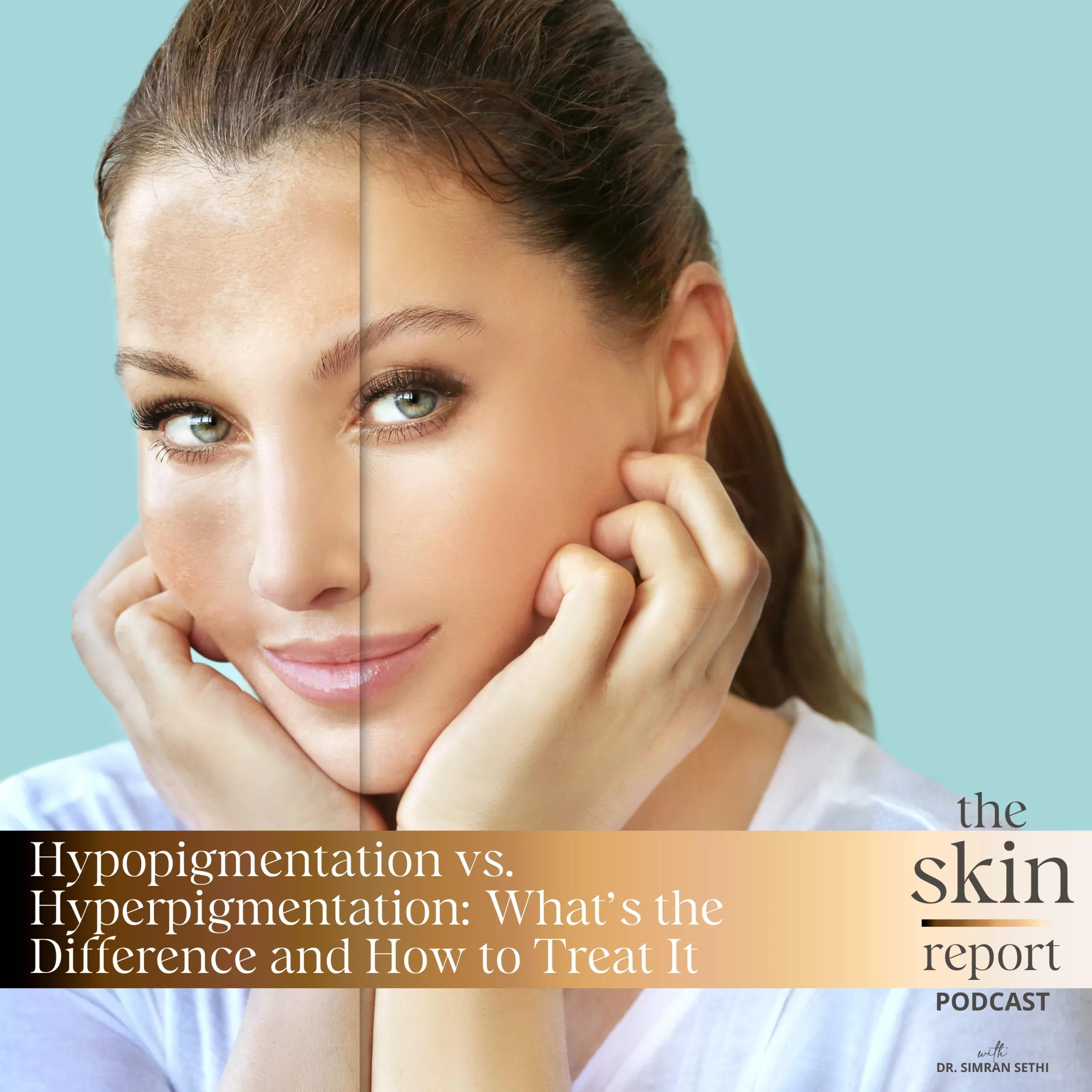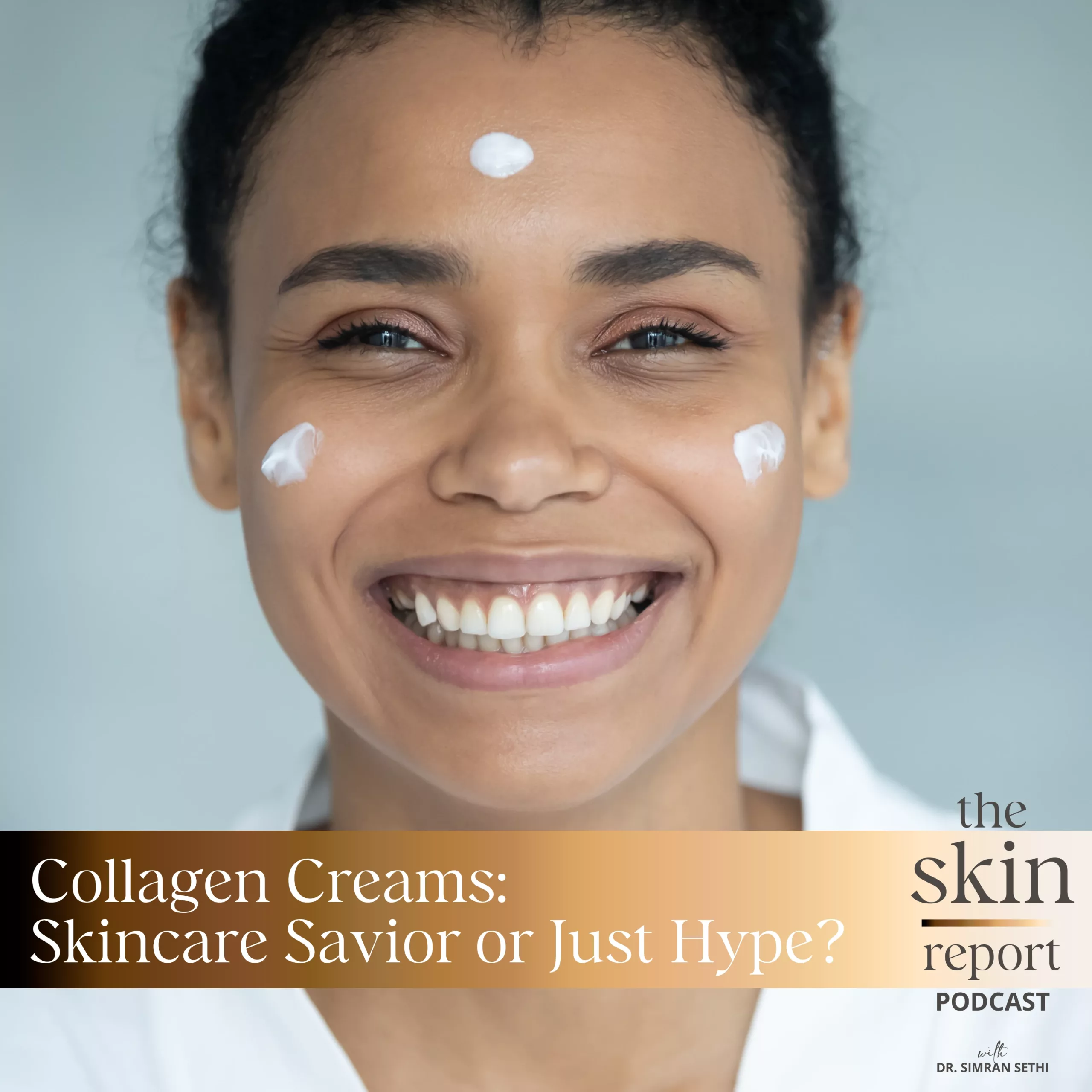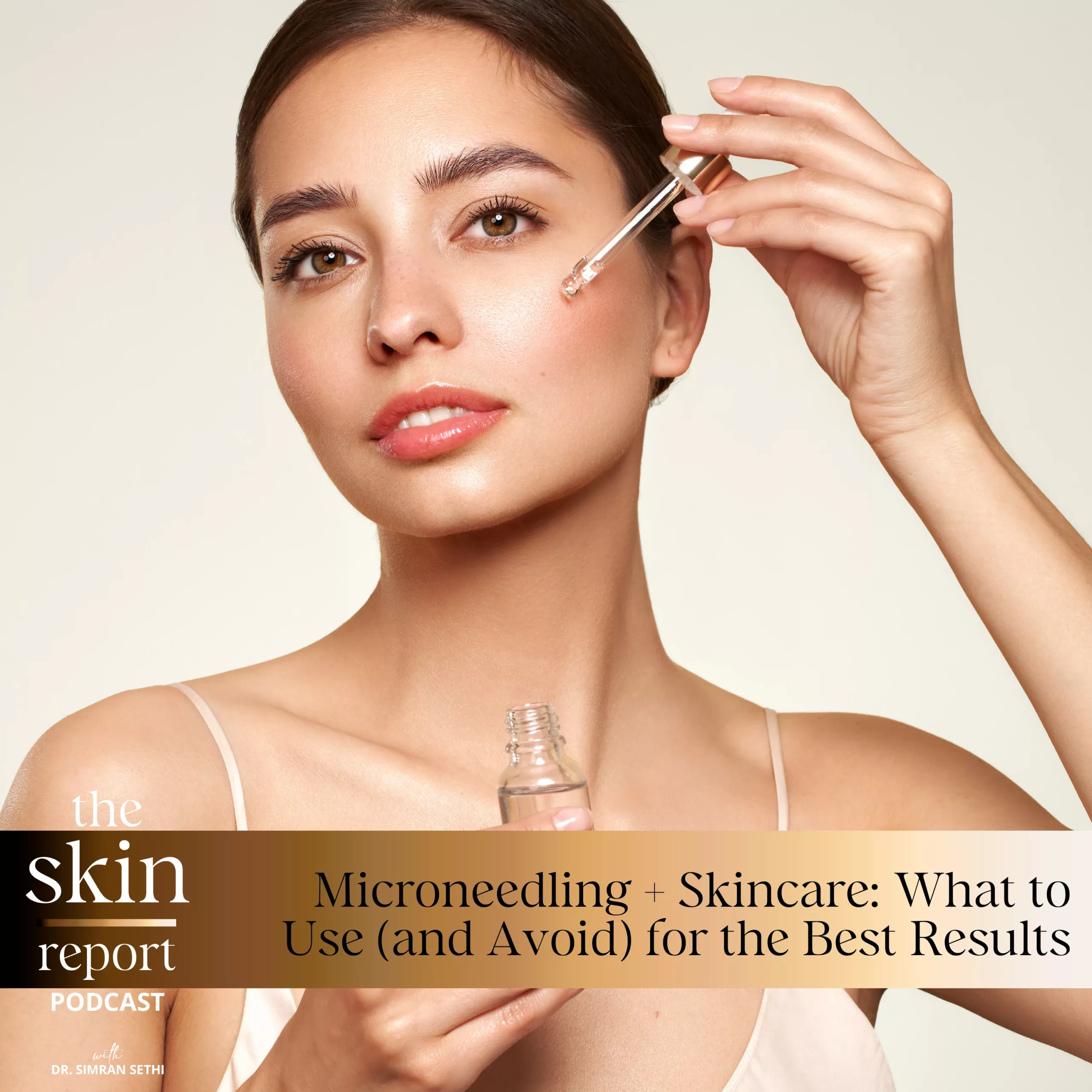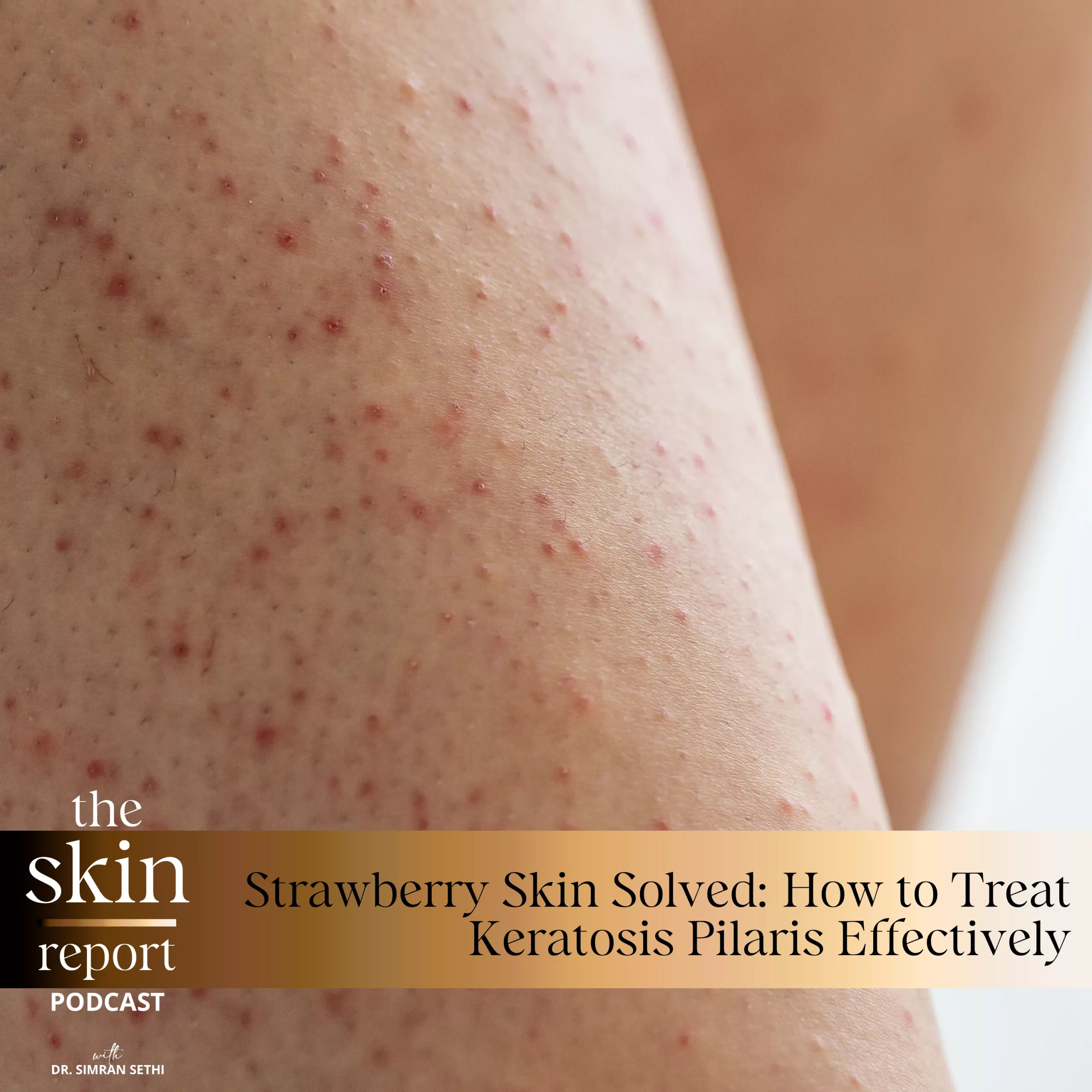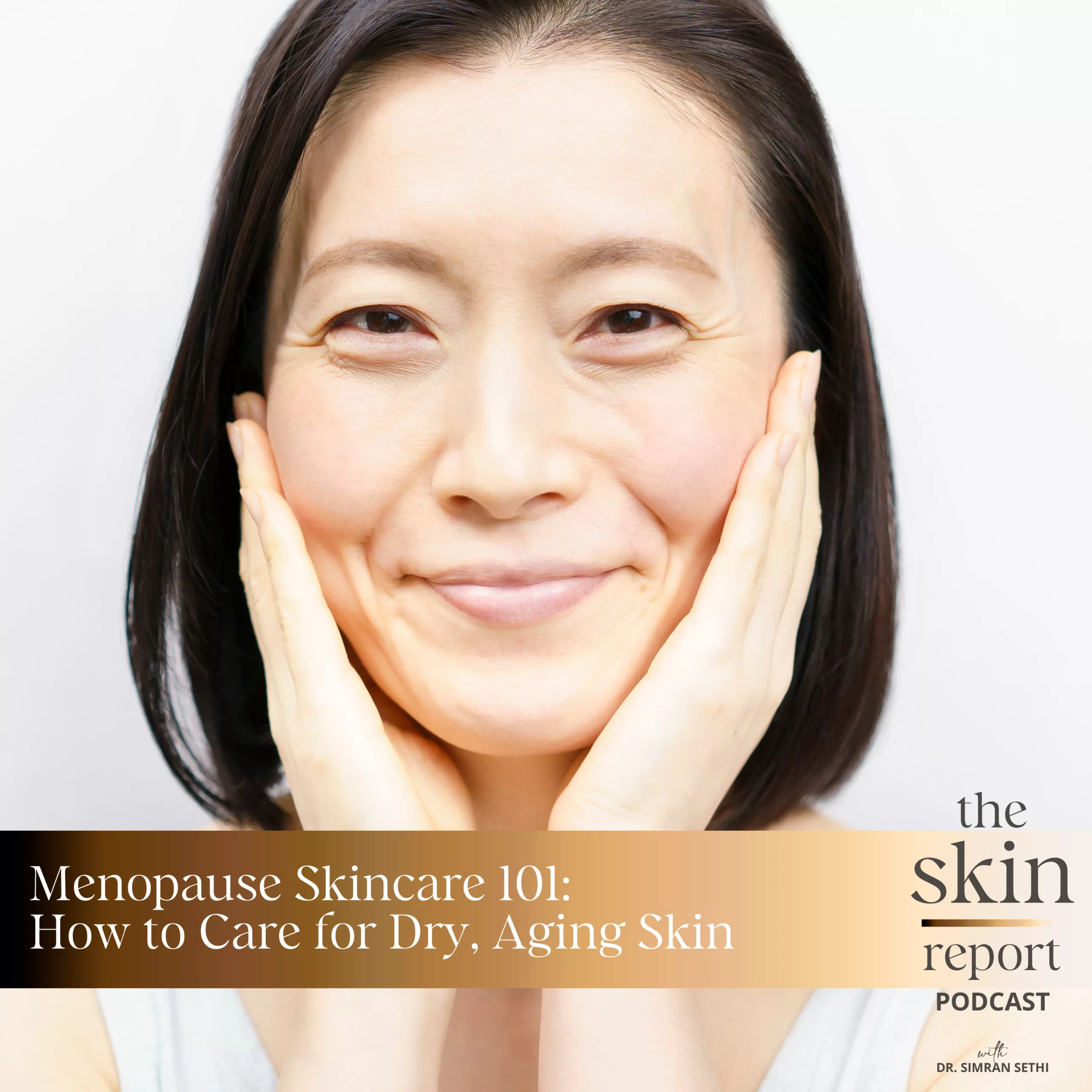While most people appreciate leaving the awkward experiences of teenhood behind, unfortunately, acne isn’t always left in our past. Acne is a condition that follows many people into adulthood. Several causes for this include environmental factors, hormonal fluctuations, premenstrual syndrome, cosmetics and tobacco use, hair removal treatments, and more.
The Skin Report is a podcast created to educate listeners on practices to improve skin health for people of all ages and ethnicities. In this episode, host Dr. Simran Sethi shares the ins and outs of adult acne. While acne is natural and nothing to be ashamed of, properly treating acne can be tricky, especially if you’re not aware of what factors may be affecting its development. Dr. Sethi addresses this by shedding light on some of the most common root causes of acne in adulthood, including those caused in part by your own skincare practices.
Follow and DM a question for Dr. Sethi to answer on The Skin Report Podcast: RenewMD
Beauty Instagram: https://www.instagram.com/renewmd_beauty/
RenewMD Beauty Medical Spas, California: https://renewmdwellness.com/
- https://jamanetwork.com/journals/jamadermatology/fullarticle/479093#:~:text=ACNE%20AFFECTS%20between%2040%20million,individuals%20in%20the%20United%20States.&text=Although%20acne%20mainly%20affects%20adolescents,men%20older%20than%2025%20years.
- https://www.cdc.gov/diabetes/basics/pcos.html#:~:text=What%20is%20PCOS%3F,US%20women%20of%20reproductive%20age.
- https://www.ncbi.nlm.nih.gov/pmc/articles/PMC2835905/
- https://www.verywellhealth.com/is-smoking-cigarettes-a-cause-of-acne-15687#:~:text=42%25%20of%20the%20smokers%20had,non%2Dinflammatory%20acne%20were%20smokers.
- https://link.springer.com/article/10.1007/s40257-020-00551-x
- https://jamanetwork.com/journals/jamadermatology/article-abstract/479093
- https://onlinelibrary.wiley.com/doi/10.1111/bjd.20882
- https://www.aad.org/public/diseases/acne/causes/hair-products
This transcript was exported on Jun 14, 2022 -view latest version here.
The Skin Report Episode 4
Skincare can sometimes feel overwhelming, whether it’s finding the right products, ingredients, or treatments. There’s a lot out there, but not always for women of color. That’s why I set out to educate myself and others, so that we can all feel beautifulin our skin. Hello and welcome to The Skin Report. I’m Dr. Simran Sethi, an internal medicine doctor, mom of three, and CEO and founder of RenewMD Medical Spas, and Skin by Dr. Sethi. Today, I want to talk to you about adult acne, what causes it, and whatwe can do about it.
Often when we hear “Acne,” we think of being a teenager. Acne as a skin condition has become almost as synonymous with adolescence as getting a driver’s license. Despite this connotation, many adults are impacted by acne. JAMA Dermatology, a peer-reviewed medical journal by the American Medical Association, discussed one study that revealed 54% of women and 40% of men older than 25 report some degree of acne. In fact, acne is a skin issue that’s been increasingly plaguing us, especiallyand particularly in Western culture. This particular topic could be its own episode, but I just want to cover it quickly for the purpose of this episode.
Here are some interesting stats on acne. A study published by the British Journal of Dermatology in 2021 revealed that the global incidence of acne has grown by more than 50% in the last three decades. Indigenous people who move to Westernized cities reported acne as a sudden problem, according to a 2020 study in the American Journal of Clinical Dermatology, so it’s important to note that environment may play a role in acne development.
However, many adult women experience acne for other reasons, and here are some common factors, some you may already be aware of, or may have even experienced. Many women report adult acne in their early twenties after years of clear skin. This is usually due to hormonal fluctuations, particularly with androgens, or growth and reproduction hormones. For example, testosterone is the most common androgen found in both men and women. There are various causes of increased androgen production in women, but the most common is polycystic ovarian syndrome, otherwise known as PCOS. Women with PCOS experience a variety of symptoms with varying severity, which means that some may experience excess acne or hair growth, while others may only suffer from irregular menstrual cycles.
PCOS is very common. According to the CDC, up to 12% of women of reproductive age could be impacted by PCOS. This comes out to as many as five million women. While the exact cause is unknown, we do know that PCOS is linked to higher levels of androgens. Higher levels of androgens lead to excess hair growth and acne on the face, chin, or chest. When I say “Excess hair growth,” also known as hirsutism, I’m referring to the growth of thick hair that grows very rapidly on the face and chin, often causing women to shave daily or wax their hair nearly every few days. This level of hair growth is problematic for multiple reasons, but here are two common reasons why it affects your skin.
First, frequent shaving on the face promotes ingrown hairs, razor burns, and uneven skin texture. Waxing involves pulling and tugging on the skin, which is also problematic, and if the wax being used is not good quality, there’s a higher chance of developing clogged pores and itching. Frequent shaving and waxing can lead to a gray shadow or cast, which is also a form of hyperpigmentation on the chin, upper lip, and sideburns area, especially in women of color. This unevenness in skin color and darker skin tones occurs very easily with shaving and frequent waxing on the face, because it creates inflammation. This is a common reason why women come to my aesthetic practice, and if I see unevenness in a patient’s skin tone, I generally ask about their hair growth and hair removal techniques so that I can address the root cause of their hyperpigmentation by recommending safe and effective laser hair removal treatments with a diode laser before embarking on a treatment plan for their skin unevenness.
Second, thick hair growth is frequently accompanied with excess sebum and resultant acne production. Interestingly, some women also start breaking out in areas of excessive hair growth because their skinreacts adversely to their hair removal techniques, like shaving, waxing, plucking, or hair removal creams. Hirsutism, AKA excess hair growth, caused generally, not always, is a common and complex sign of PCOS, and deserves a dedicated episode to discuss direct strategies to address it.
Adult acne is such acommon and problematic symptom of PCOS, and unfortunately can last for years if undiagnosed, and also if it’s left untreated. This type of acne can lead to deep and dark acne scars, especially in women of color. The first thing to do is address PCOS and adult acne. If you suspect that you may have symptoms of PCOS, it is important to speak to your doctor to start a treatment plan, as this will be the first step towards treating all the skin condition caused by PCOS. You can also begin logging or journalingyour experience before your doctor’s visit, so you have a prepared train of thought. You’ll be surprised how much of your self-discovery can lead to a straightforward plan of action.
Once the hormonal imbalance caused by PCOS has been eliminated, but acnestill persists, we can take steps towards a successful treatment plan for your acne and hyperpigmentation. Typically, when a woman is struggling with hormonal acne, doctors tend to suggest birth control pills as a strategy to contain a low dose of estrogen to balance the androgen levels. I know many young women are reluctant to use birth control because they’re worried about side effects like weight gain or permanent infertility. Let me assure you that these are all myths. Birth control uses very low dosesof hormones and does not cause weight gain or permanent infertility. Birth control for the purpose of adult acne only needs to be used for six months to a year until hormonal balance is achieved, and can be safely stopped at that point.
Additionally, women can take a non-hormonal medicine called spironolactone, which can also help androgen levels and control acne without exposing you to any kinds of exogenous hormones. If you’re nervous about taking medications like birth control or spironolactone, this iscompletely understandable, but keep in mind that this is still the first and most important step towards addressing hormonal adult acne, because topical treatments like skincare, or medical-grade treatments, will not address the root cause of the acne, and will definitely not show any results.
Now, once women with adult acne are successfully using medications, they’re ready to take on a skincare routine and possible medical-grade treatment to address their acne scars and dark spots, otherwise known as post-inflammatory hyperpigmentation. As your skin matures, its texture needs evolve naturally. So when you’re combating adult acne, it’s important to adopt an adult skincare routine for where your skin currently is, versus a skincare routine that is more suitable for teenage acne. We delved into the best skincare practices for every age last week. If you’d like a more in-depth look at what you should be prioritizing for the decade you’re in, check out episode three of The Skin Report.
The right skincare products and treatments can help erase scarring and hyperpigmentation caused by acne lesions. Today, I’m going to focus solely on the appropriate skincare routine for adult acne, and discuss medical-grade treatments for more stubborn cases of adult acne in a future episode.
For women of color, this is especially important, as melanin can lead to excess hyperpigmentation and scarring, even after the acne lesions have subsided. As previously discussed, hyperpigmentation and dark spots often impact women of color. Products with vitamin C or other brightening treatments should be incorporated into the skincare routine for everyone, but especially for women of color. Products that are often labeled for causing brightening or skin clarifying can contain harsh chemical exfoliants, or are very drying. I strongly recommend avoiding these types of products for adult acne, because they will actually increase hyperpigmentation and prevent skin healing.
Products containing the chemical exfoliants alpha or beta hydroxy acid at high concentrations are frequently marketed as brightening agents, and I see many women with more melanated skin tones use these, only to experience more hyperpigmentation in their acne scars. Instead, focus on skin-nourishing agents that promote the skin renewal cycle with glycolipids, vitamin C, and green tea to reduce inflammation, hyperpigmentation, and promote building back the skin barrier. But say you are still experiencing acne, is it possible to have adult acne that’s not hormonal? We’ll answer that when we return.
Many people assume that adult acne in women is caused solely by hormonal disruptions. However, there can be other causes of acne for women in their mid to late twenties. For example, many women experience acne around their menstrual cycle. Up to 83% of women with acne note premenstrual flares. In one series of 41 women between the ages of 18 and 44 with acne, 63% showed a premenstrual increase in the number of inflammatory lesions, and the number of inflammatory lesions present increased by 25%.
However, there can be other causes not related to your menstrual cycle that can happen at any age. Here are some other factors that cause acne. Recent research has shown a correlation between smoking and adult acne. A recent study of over 1,000 women found that about 75% of women with atypical adult acne had a smoking habit. Another study found that 42% of smokers had acne, compared to only 10% of non-smokers. Research has also suggested that the correlation between acne and smoking do not just exist with cigarette smoking, but also extend to vaping. So basically, not only is smoking terrible for your lungs, it is also a leading cause of adult acne production and premature skin aging.
Another reason why women tend to experience more acne than men may bedue to what we call acne cosmetica. This type of acne is caused by the use of cosmetics on the skin. Makeup on its own doesn’t necessarily cause acne. Rather, excessive use, improper use, or using makeup that contains loads of synthetic ingredients can clog pores and lead to increased acne. Unfortunately, many women cover up their acne lesions with even more makeup, resulting in a vicious cycle of breakouts and cover up.
Additionally, not taking makeup off at night is a major factor in leading to breakouts. That’s why it’s always important to take makeup off before bed, or even when you first return home. Using a gentle but effective liquid cleanser daily at night will remove makeup, dirt, and debris from skin without over-drying it. I do not recommend makeup wipes for daily use, as they do not really wash out pores as effectively as a cleanser and water.
As previously said, the same can go for hair products. While hair products may not directly cause acne, they can contain oil that clogs pores, leading to acne. You may find your hair products as the cause of your acne if you experience whiteheads or papules, small flesh-colored bumps around the hairline, forehead, or neck. When it comes to hair, switching to oil-free products and washing pillow cases, hats, and other items your hair touches will help reduce this type of breakout. When we come back, we’ll go over another common cause of acne, one that you may not expect.
Something that may be causing adult acne that many of us may not realize is hair removal treatments. Shaving, waxing, tweezing, hair removal creams, and threading can cause breakouts. For women of color, these hair removal techniques alone can cause hyperpigmentation, even if they’re not accompanied with breakouts. Now, why is this so? Manual hair removal, such as waxing, tweezing, and threading, pull and tug at the skin, resulting in inflammation and hyperpigmentation.
Hair removal creams tend to be more harmful, as they create a chemical burn on the skin to dissolve hair growth. This is by farmy least-recommended hair removal technique, because in my aesthetic practice, I’ve seen so many women of color suffer from terrible chemical burns that leave severe hyperpigmentation on their skin. Again, hair removal, especially for skin of color, can be a whole episode, and we will get into it at a later date. For now, I will leave you with my number one recommendation for reducing adult acne, scarring, and hyperpigmentation caused by excess facial hair growth. Laser hair removal.
Adult acne is common and nothing to be ashamed of. There are many methods and approaches we can take to treat it. So if you’d like to learn more about how to treat your skin type, or are simply curious about aesthetic procedures, please subscribe to The Skin Report so that you know when we release new episodes. If you have a skincare question, please DM me at renewmd_beauty, and I will answer it in our next episode. Thank you for listening.
Transcript by Rev.com


